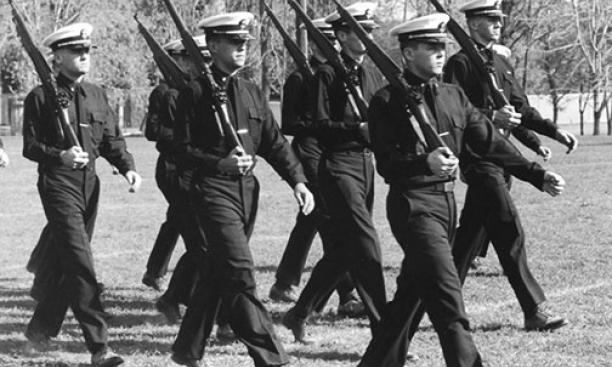

A Naval ROTC (NROTC) program will return to Princeton this fall for the first time since the Vietnam War.
The so-called “crosstown” program will be organized in conjunction with an NROTC program based at Rutgers University. All classes and training will be held at Rutgers, and Princeton students will be required to travel to New Brunswick several times a week, according to Capt. Philip Roos, the commanding officer of the Rutgers program. “We are ecstatic that we will have the opportunity to expand our program to include Princeton students,” Roos said.
President Eisgruber ’83 and Secretary of the Navy Ray Mabus hailed the return of NROTC to campus.
“I have heard from many alumni about how important this program was in their lives,” Eisgruber said. “I am glad that this generation of students will have access to the kinds of training that the program provides and to the kinds of leadership positions for which it will prepare them.”
“The formation of an NROTC crosstown unit at Princeton re-establishes a naval presence at another of our country’s premier schools,” Mabus said.
There are currently 27 students in the Rutgers NROTC program, which has been active since March 2012. Students who complete NROTC are commissioned as ensigns in the Navy or as second lieutenants in the Marine Corps.
Princeton’s NROTC program dates back to the end of World War II. Its creation was announced by Secretary of the Navy James Forrestal 1915 in May 1945, and it began the following fall. NROTC alumni include astronaut Charles “Pete” Conrad ’53 and former defense secretaries Frank Carlucci ’52 and Donald Rumsfeld ’54. Army ROTC has existed at Princeton since 1919; an Air Force ROTC program was created in 1951, when overall campus ROTC enrollment reached an all-time high of 1,107 students.
That number dwindled steadily over the next two decades and was down to just 113 students in May 1970, when the U.S. bombing of Cambodia led to massive protests during which the ROTC offices at the Princeton Armory were firebombed. That month the faculty, which already had voted to strip ROTC courses of academic credit and to deny instructors faculty status, voted to eliminate ROTC altogether. The Navy and Air Force programs ended the following year.
Efforts to bring ROTC back to Ivy League campuses accelerated after the Pentagon dropped its “don’t ask, don’t tell” policy banning openly gay service members in September 2011. Next fall, Brown and Dartmouth will be the only schools in the Ivy League without Navy or Air Force ROTC. All eight Ivy League universities offer Army ROTC.
Princeton’s Army ROTC corps includes about 80 undergraduates — 24 from Princeton and the rest from the College of New Jersey, Rutgers-Camden, Rowan University, and Rider University. One Princeton undergraduate participates in a crosstown Air Force ROTC program at Rutgers.
“Princeton is a very welcome environment for military veterans and for students thinking about military careers, and the addition of Naval ROTC signals that,” said Jim Marshall ’72, president of Alumni and Friends of Princeton University ROTC.
